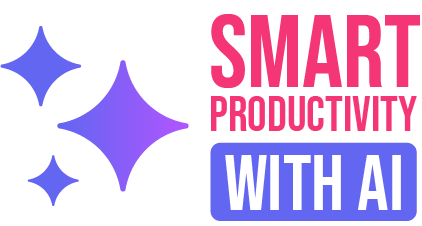What is Workflow Automation?
Workflow automation is the process of using technology to complete repetitive tasks with minimal human input. Instead of manually handling each step of a process, automation tools handle these tasks automatically, allowing you to focus on more meaningful work. In recent years, AI-powered automation has taken workflow automation to the next level, making it smarter, faster, and more intuitive.
From managing emails and scheduling meetings to processing data and tracking projects, AI workflow automation helps streamline daily tasks. In this guide, we’ll explore how AI can enhance workflow automation, the benefits it offers, and practical steps to get started.
Why Workflow Automation Matters in Today’s World
In our fast-paced world, efficiency is key. Businesses and individuals alike are juggling multiple tasks, deadlines, and responsibilities. Manual processes often lead to wasted time, human error, and unnecessary stress. Workflow automation eliminates these inefficiencies by handling routine tasks for you.
By automating workflows, you can:
- Save Time: Focus on high-value work instead of repetitive tasks.
- Reduce Errors: Minimize mistakes caused by human oversight.
- Stay Organized: Ensure tasks are completed on time and in the right order.
- Boost Productivity: Achieve more with less effort and fewer distractions.
Incorporating AI into your workflow automation takes these benefits even further. AI doesn’t just automate tasks — it learns and adapts, making your processes more efficient over time.
Key Elements of Effective Workflow Automation
Effective workflow automation is more than just using tools; it’s about understanding the processes and optimizing them for efficiency. Here are some key elements to consider:
- Clear Objectives: Identify the tasks you want to automate and the outcomes you expect.
- Process Mapping: Visualize each step of the workflow to find areas for automation.
- Scalability: Choose automation solutions that can grow with your needs.
- Flexibility: Ensure the automation can adapt to changes in your workflow.
- Monitoring and Optimization: Continuously review the automation to make improvements.
By focusing on these elements, you can create a streamlined workflow that truly enhances productivity.
How AI Powers Workflow Automation
AI brings intelligence and adaptability to workflow automation. While traditional automation follows fixed rules, AI can analyze data, recognize patterns, and make decisions. Here’s how AI enhances workflow automation:
- Smart Decision-Making: AI evaluates data and makes real-time decisions, such as prioritizing tasks or identifying errors.
- Learning and Adapting: AI systems improve over time by learning from past experiences.
- Natural Language Processing (NLP): AI tools can understand and process language, making tasks like email management and communication easier.
- Predictive Insights: AI can predict outcomes and suggest improvements to your workflows.
- Seamless Integration: AI tools integrate with existing systems, enhancing automation without disrupting current processes.
For example, AI can automatically sort incoming emails, prioritize important ones, and even draft responses based on your preferences. This reduces the time spent managing your inbox and helps you stay focused on key tasks.
Step-by-Step Guide to Automating Your Workflow
Ready to automate your workflow with AI? Here’s a step-by-step guide to get started:
Step 1: Identify Repetitive Tasks
Make a list of tasks that are time-consuming, repetitive, and prone to human error. Examples include data entry, scheduling, and email responses.
Step 2: Map Out the Workflow
Visualize each step in the process. For example, if you’re automating meeting scheduling, the steps might include checking availability, sending invites, and confirming the meeting.
Step 3: Choose the Right Tools
Select AI-powered tools that match your needs. Look for tools that integrate seamlessly with your existing systems.
Step 4: Set Up Automation Rules
Define the rules and conditions for your automation. For example, “If I receive an email with ‘meeting request,’ automatically check my calendar and propose available times.”
Step 5: Test the Automation
Run the automation on a small scale to see if it works as intended. Identify any issues and make adjustments.
Step 6: Monitor and Optimize
Regularly review the automation to ensure it’s running smoothly. Look for opportunities to improve and refine the process.
Common Workflow Automation Mistakes to Avoid
While automation can be incredibly helpful, there are some pitfalls to watch out for:
- Over-Automation: Automating tasks that require human judgment can lead to errors.
- Ignoring Updates: Failing to review and update automation rules can make them outdated.
- Lack of Monitoring: Automation needs regular checks to ensure it’s working properly.
- Neglecting Training: Teams should understand how to use and troubleshoot automation tools.
By avoiding these mistakes, you can ensure that your workflow automation remains effective.
Benefits of AI-Powered Workflow Automation
- Time Savings: Automate routine tasks and focus on high-priority work.
- Improved Accuracy: Reduce errors by minimizing manual input.
- Consistency: Ensure tasks are completed the same way every time.
- Scalability: Easily expand automation as your needs grow.
- Stress Reduction: Free up mental energy by letting AI handle repetitive tasks.
Real-World Examples of AI in Workflow Automation
AI is already enhancing workflows across various industries. For example, AI sorts emails and flags important messages, project management tools automate task assignments, and chatbots provide instant customer support. Data analysis tools automatically process large datasets and generate reports, helping businesses make informed decisions quickly.
Frequently Asked Questions (FAQs)
1. What types of tasks can I automate?
You can automate scheduling, email management, data entry, report generation, and more.
2. Is workflow automation suitable for small businesses?
Yes! Automation tools are accessible and scalable for businesses of all sizes.
3. Will automation replace my job?
No, automation handles repetitive tasks, freeing you up for more creative and strategic work.
Workflow automation, especially when powered by AI, is a game-changer for productivity. It simplifies repetitive tasks, reduces errors, and helps you focus on meaningful work. By following the steps in this guide, you can start automating your workflows and enjoy a smoother, more efficient way of working. The future is all about working smarter — and AI is here to help you do just that.



